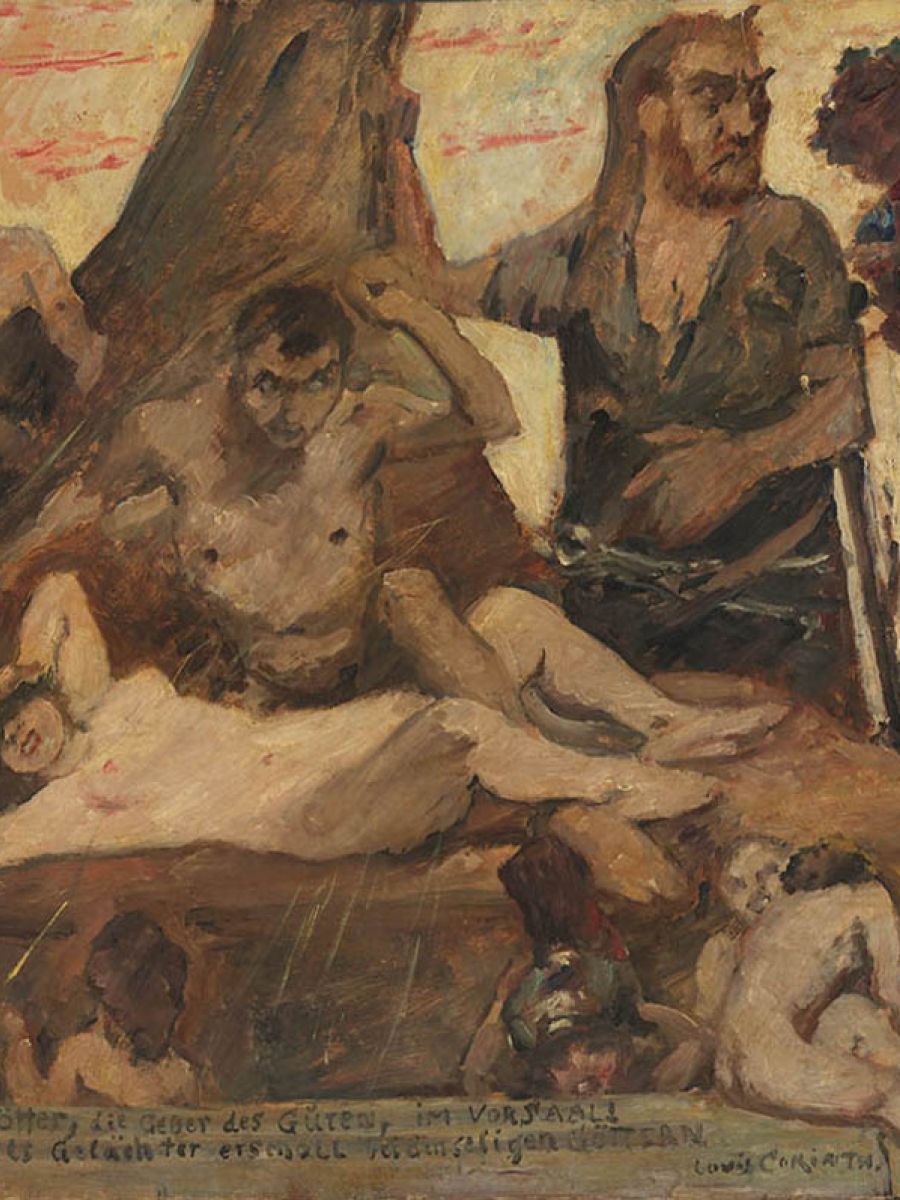Homeric humour

Put on show
Aphrodite was the most beautiful of the goddesses. Zeus felt she had become too vain and decided to take her down a peg or two by making her marry the ugly and lame blacksmith Hephaestus. While her husband laboured in his forge, Aphrodite carried on with that most macho of deities, Ares the god of war. When Hephaestus inevitably caught the adulterous couple in flagrante, he threw a net over them, summoned his friends and put the naked couple on show. The assembled deities could not contain their hilarity.
The expression ‘Homeric laughter’ comes from a passage in Homer’s Iliad.

Homeric Laughter - Lovis Corinth
Atmosphere of unease
With a large brush and a palette of gloomy tones, Lovis Corinth (1858–1925) spread an atmosphere of unease over the canvas, in which emotion takes precedence over aesthetics. This is Expressionism in the fullest sense of the word.
As far as the theme is concerned, this moralizing scene fits seamlessly into the KMSKA collection. Its acquisition is particularly important in stylistic and art-historical terms: Lovis Corinth was influenced by 17th-century masters like Rubens, Rembrandt and Hals, all of whom feature in the museum collection.
For his own part, Corinth influenced not only his European contemporaries, but also later painters with a similarly loose and broad touch, such as Oskar Kokoschka, Lucian Freud and Georg Baselitz.
Degenerate art
The newly acquired work expands the international context of the Flemish Expressionist collection. German Expressionism was already represented in the shape of works by Georg Grosz, Karl Hofer and a later painting by Lovis Corinth. These were all artists whom the Nazi regime considered ‘degenerate’ and whose work was removed from German museums to be sold off or burned. The KMSKA purchased three of their paintings in 1939 at the notorious auction in Lucerne, at which Germans unloaded their ‘degenerate art’.
Lucky break
German Expressionist painters command high prices and so the museum’s ambition to expand in this area remained a dream for a long time. In the spring of 2019, however, KMSKA curators spotted this extraordinary work of art at the TEFAF fair in Maastricht. The price was fair too. It was not being exhibited in a booth but kept in a cabinet, where it was only presented to interested collectors. The museum purchased the painting using funds from the bequest of Gilberte Ghesquière, who wanted to support the KMSKA’s conservation, research and collection-building efforts.
Homeric Laughter is a high-quality, visually strong work that will undoubtedly stand out in the new museum presentation.




